Ruth Mountain Trip Report (July 2022)
Our first glaciated summit!
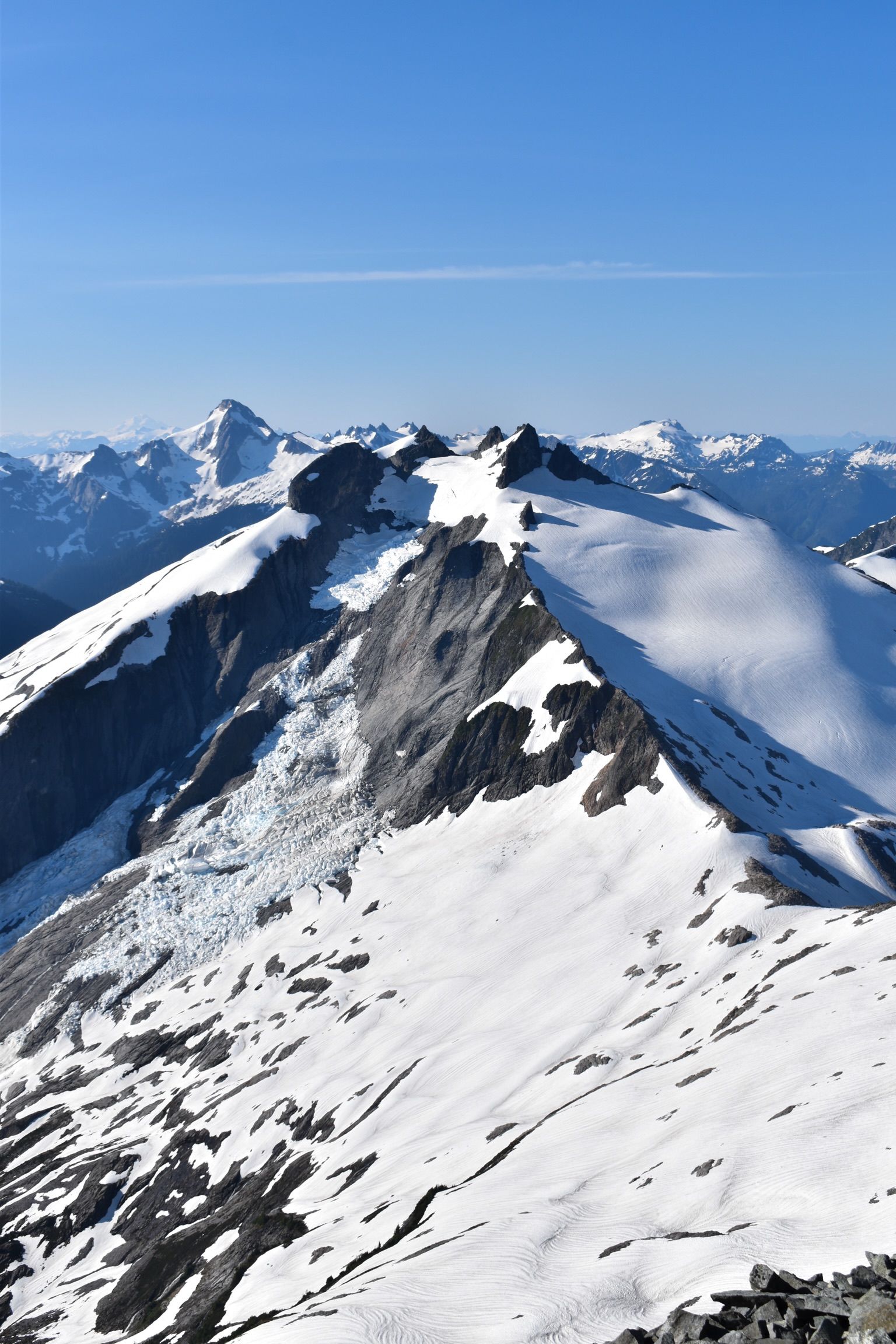
July 23-24th, 2022
After spending 2022 gaining and practicing mountaineering skills, we were so excited to attempt our first glaciated summit!
In January, Greg and I took our AIARE 1 (Avalanche) course. April was our crevasse rescue course, where we also refreshed skills like self arresting. We spent the rest of the spring and early summer practicing these skills and teaching them to our friend Paul. We read American Alpine Club (AAC) articles, trip reports, and Freedom of the Hills. We watched The Mountaineer's and Outdoor Research's glacier travel/crevasse rescue Youtube videos taught by IFMGA American Mountain Guide/AMGA Instructors.
Finally, the weekend of our trip approached and... the weather was awful.
Luckily, we live in nearby Seattle so we postponed to the following weekend, hoping for sunshine (or at least no storms). We wanted prime conditions to make things simpler for our first mountaineering trip– and I really wanted those 360° summit views.
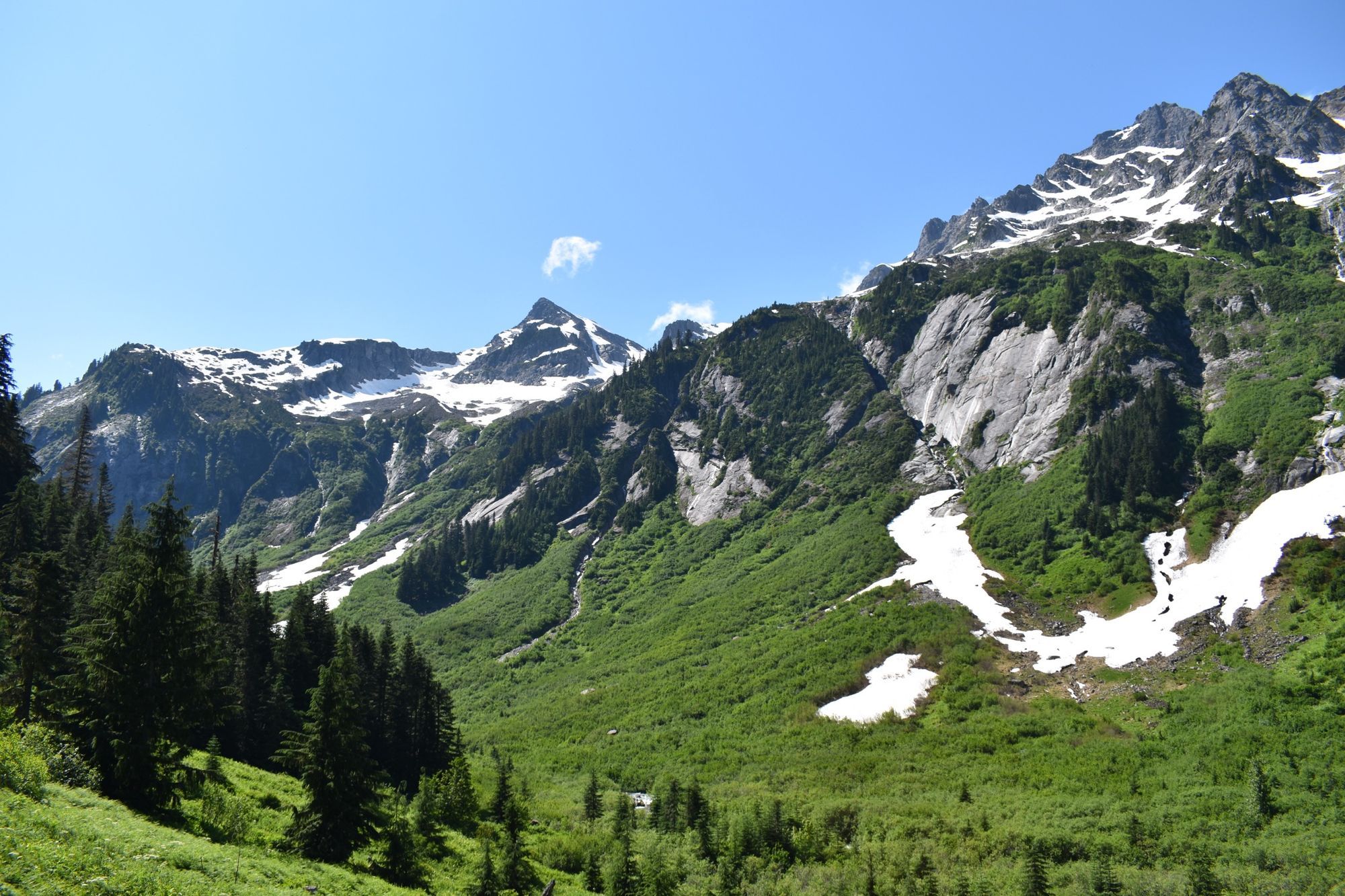
Prime conditions we got!
The next weekend came and trail conditions were absolutely perfect.

The rotten snow bridges from the weeks before all melted out so the stream crossings were easy. WTA crews did great work on Hannegan Pass Trail, preventing erosion against steep side hills. The wildflowers were even blooming!!
The weather was lovely but it was a hot hike in and out the valley. The trail is pretty exposed so we wore lots of sunscreen!
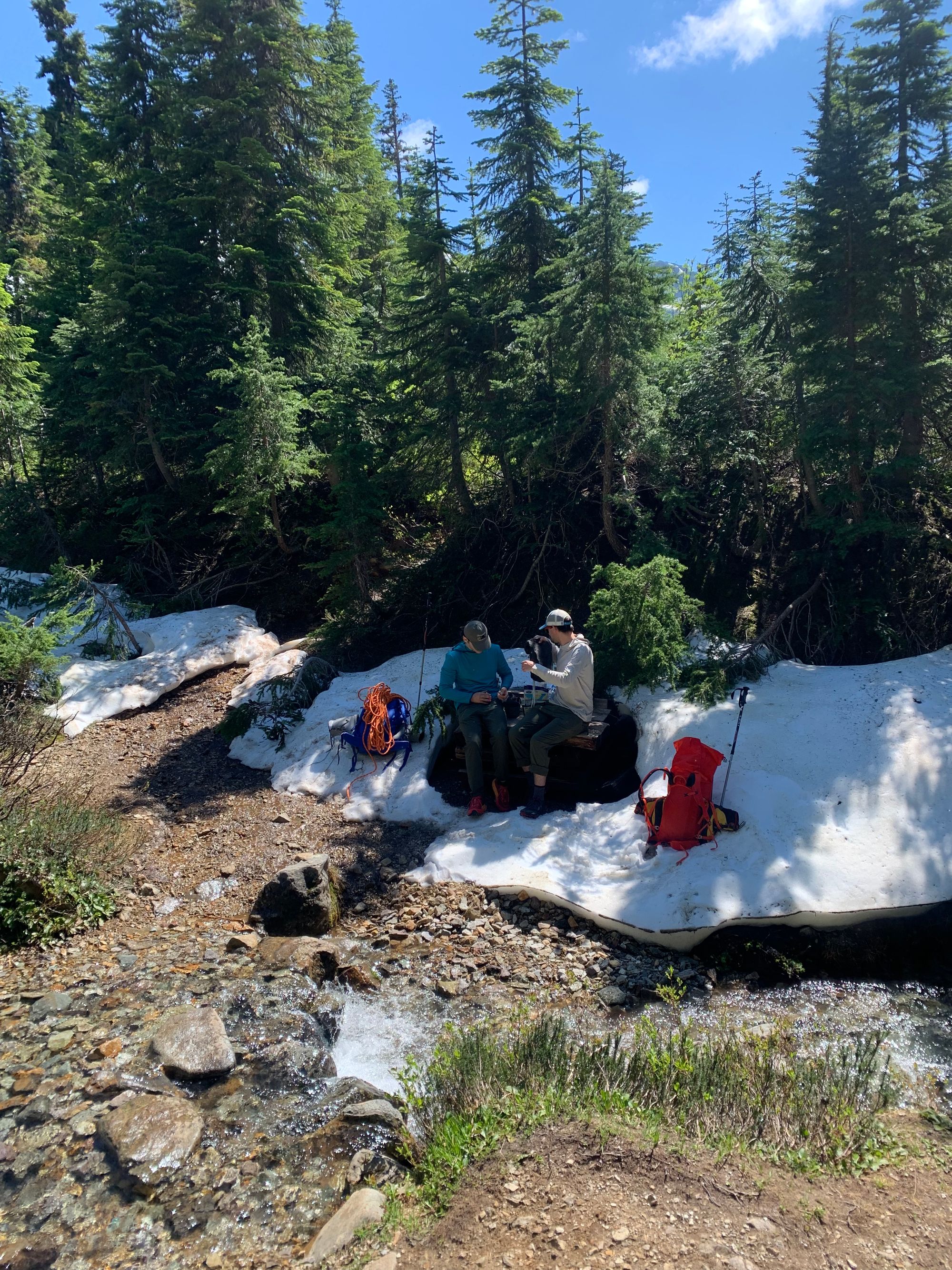
The Hannegan Camp area was busy with backpackers and Ruth climbers trickling in and out to filter water from the stream. This area is known for black bears, so proper food storage is essential (bear can, Ursack, etc.). There aren't good trees for a PCT style bear hang close to the camp area. Hannegan Camp and Hannegan Pass have toilet facilities.
Shortly above Hannegan Camp, there was one more good stream and no easily accessible good water above that.
There was no snow until just after Hannegan Pass, so we made great time.
Ahead of schedule, we hung out at Hannegan Camp for a while to enjoy the sunshine. Over an early dinner, we debated our options. We had planned to camp at either Hannegan Camp or on Ruth Arm, depending on timing. It was still so early in the day, and the idea of sunset in the alpine lured us onward and upward.
We passed a few people doing the Copper Ridge Loop. I'd definitely love to come back to this area to backpack (or possibly even run) the loop.
We turned off to the right at Hannegan Pass to leave the official trails behind and begin the climb to Ruth Arm.
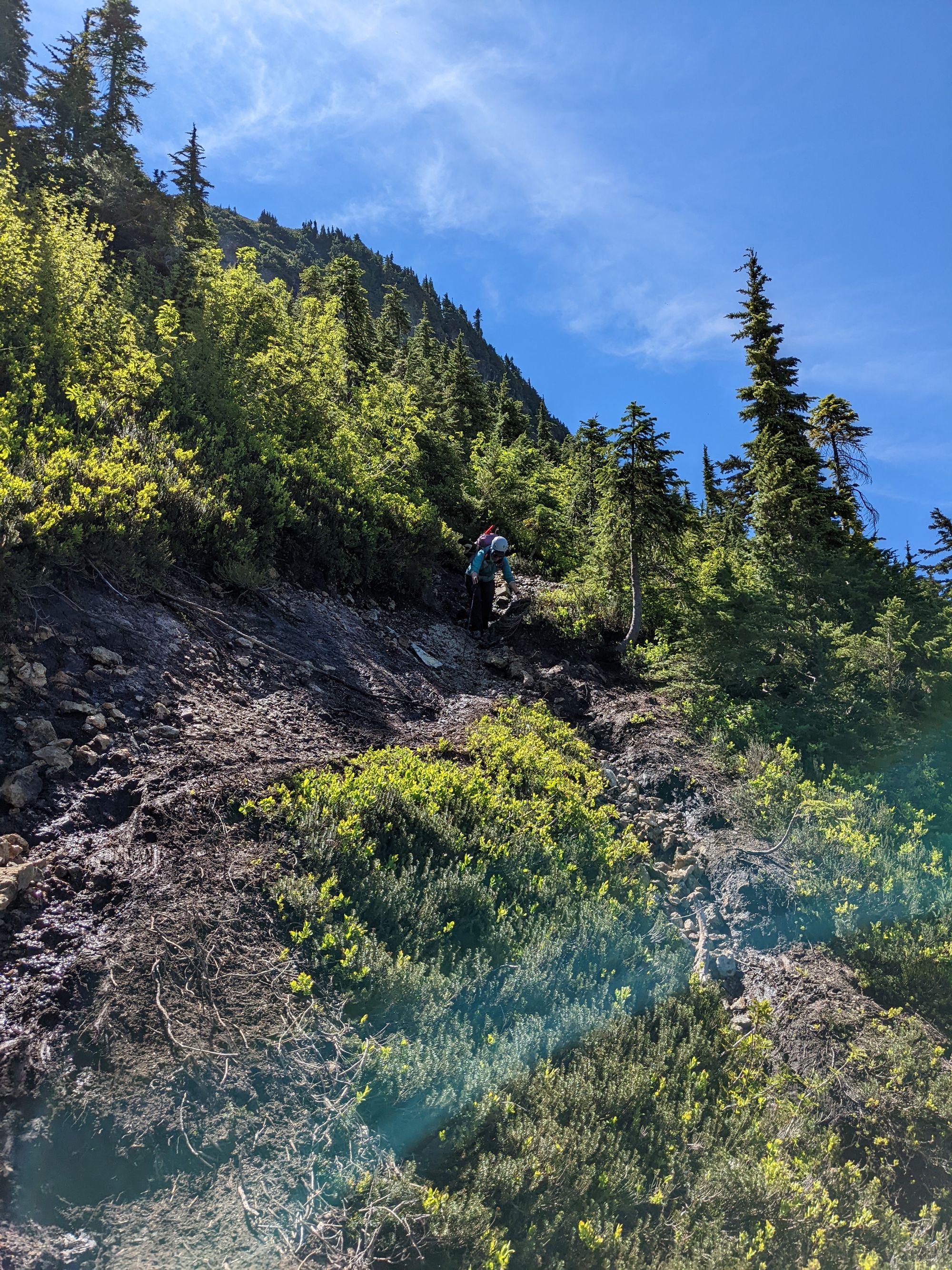
There was a short snowfield and then it was time for the infamous muddy gully.
The gully was, by far, the worst part of the entire climb.
Lots of extremely loose rock, plenty of water flowing down the gully, and mud (as advertised). Luckily, it didn't go on for too long and then the snow started up again for the traverse.
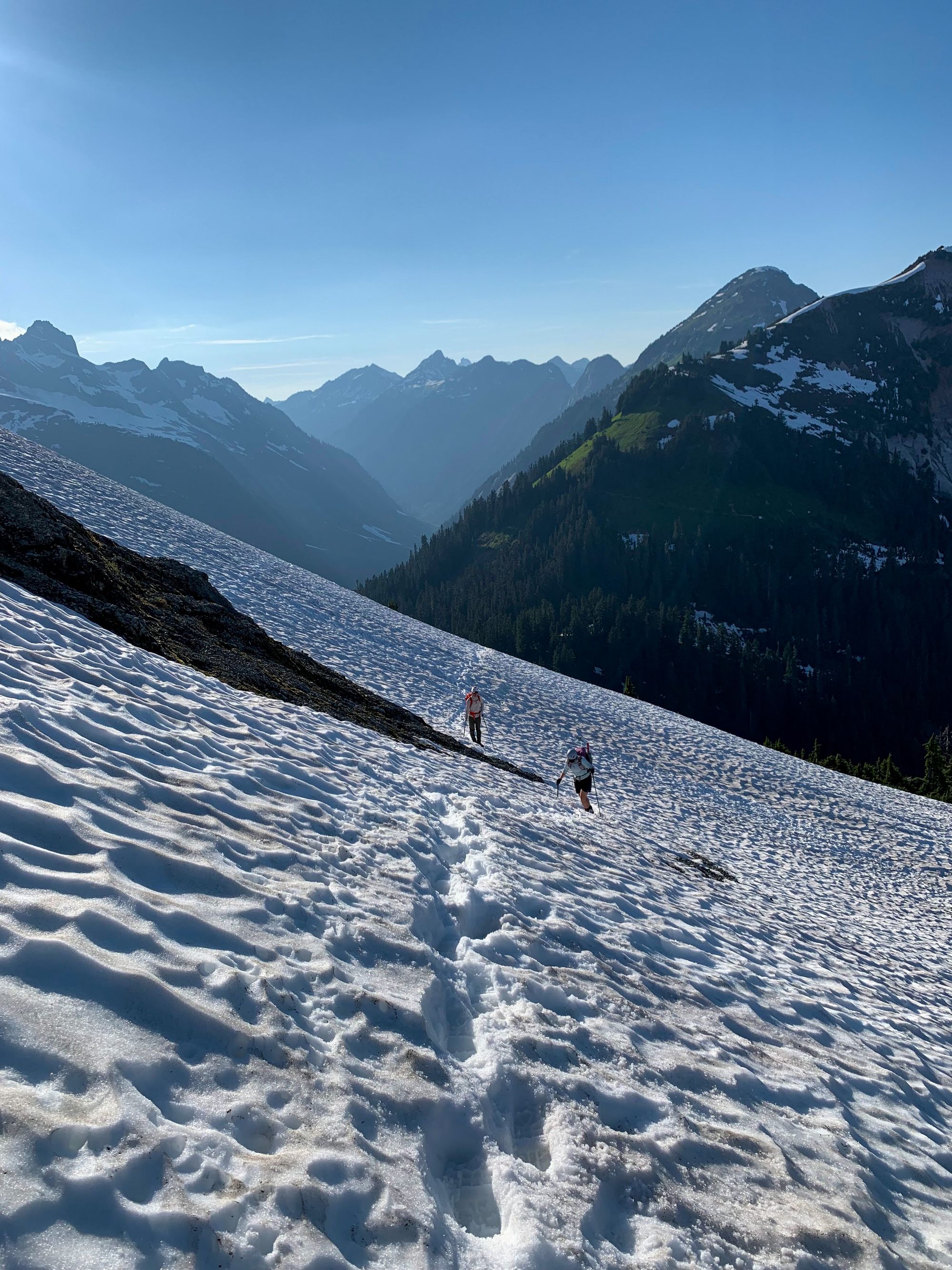
The traverse includes some steep snow that navigates around Point 5930. This avalanche prone section (low danger at the time of our climb in late July) passes above cliffs. When I saw the runout, I took my ice axe out and suppressed my thoughts of camping at the top of the gully to make this traverse a tomorrow problem.
We were going for the ridge, baby!
I was a bit nervous while kicking steps across the slope in the beginning, but I felt secure the entire time. Paul took over to help set a good platform ahead of me, which helped a lot. There were cliffs below us, but I'd have time to self arrest if I did slip. But I reminded myself that I was in control and I wasn't going to fall. I focused on ensuring my feet were stable (easy since Paul was kicking great steps ahead of me) and reminding myself of the tips from the AAC snow travel article.


The article stresses that while "slip on snow" might sound innoculous, it's the leading cause of snow travel accidents. "If a slip or fall on snow appears in the heading of an abstract, it usually means that something terrible has happened. It might mean that someone has died." (AAC)
The best way to prevent these incidents is to focus on effective snow movement techniques (described in the article) and fall avoidance. So, I focused on my steps, balance, and the amazing views.
I'm afraid of heights, but in the last few years, and the last year especially, I've made so much progress. Focusing on acknowledging my fear, but remaining in control and doing things scared has allowed me to complete climbs I dreamed of, but that I was afraid I wouldn't be able to mentally do. Each time, surpressing the panicky thoughts gets easier and easier.
Turning the corner of Point 5930, we received a big reward: the iconic view of Ruth.
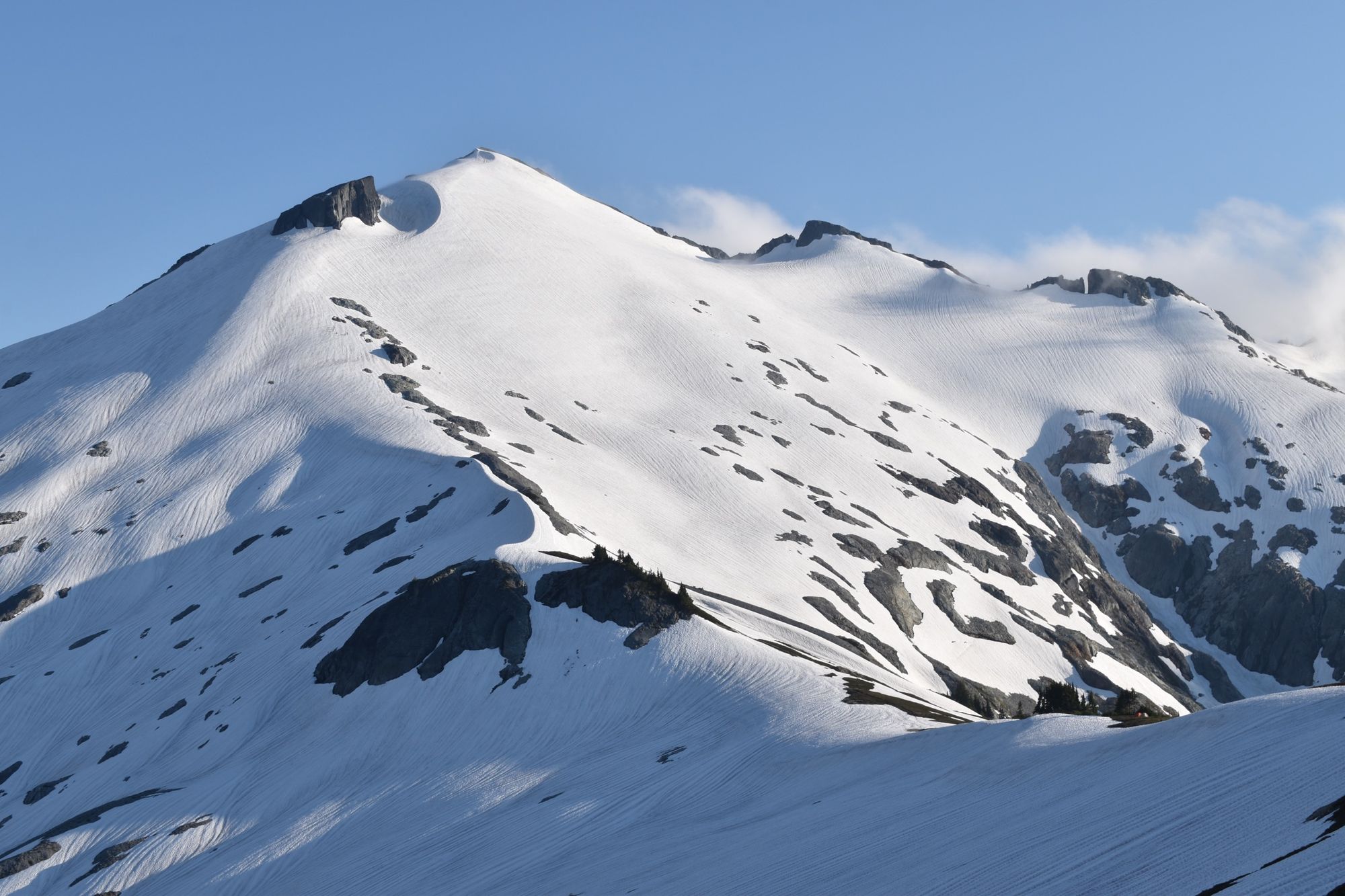
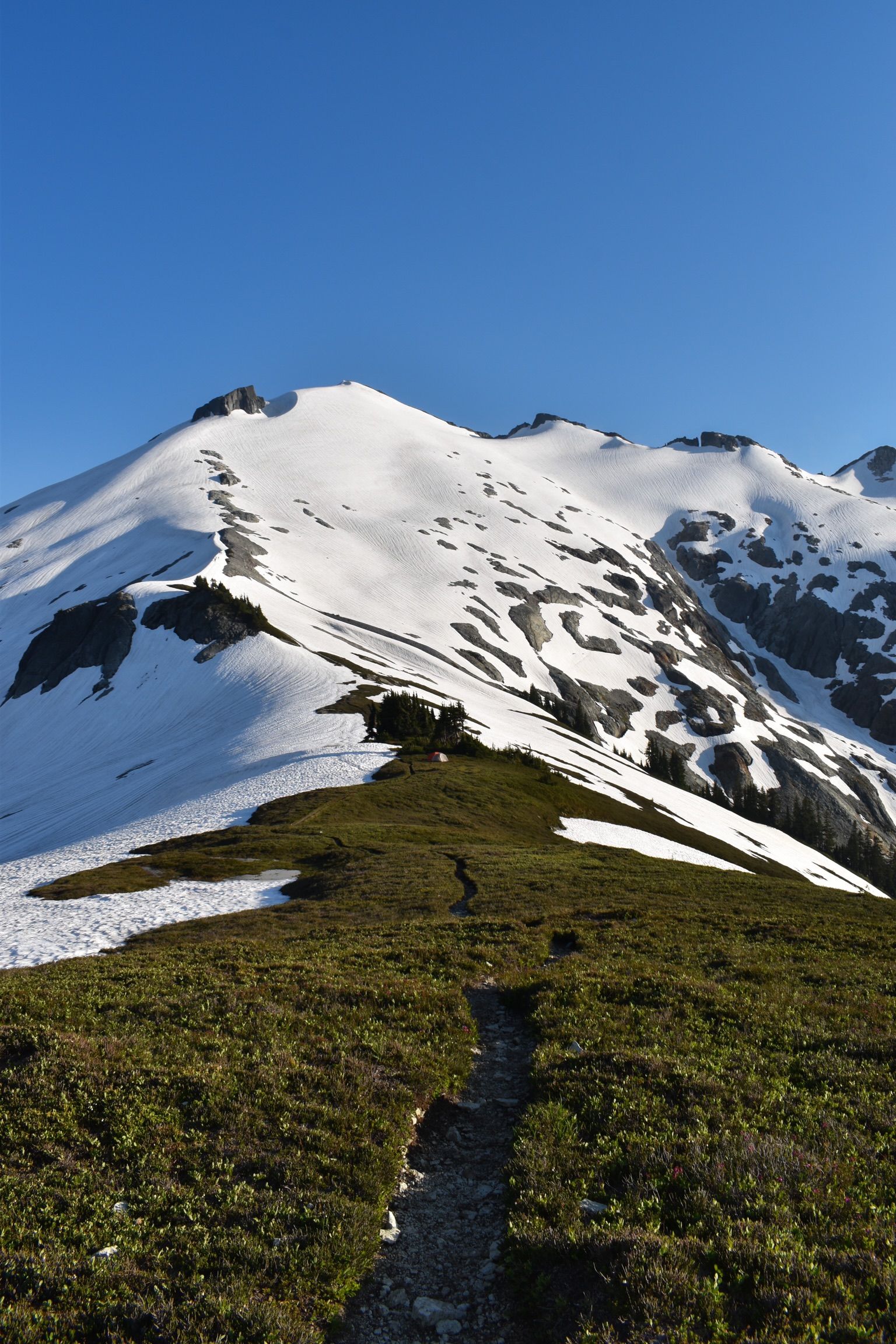
The ridge is absolutely breathtaking. My chest was tight with awe; I was in the most surreal place I had ever been.
We set up camp, ate some protein bars, and enjoyed sunset on beautiful Ruth Arm.
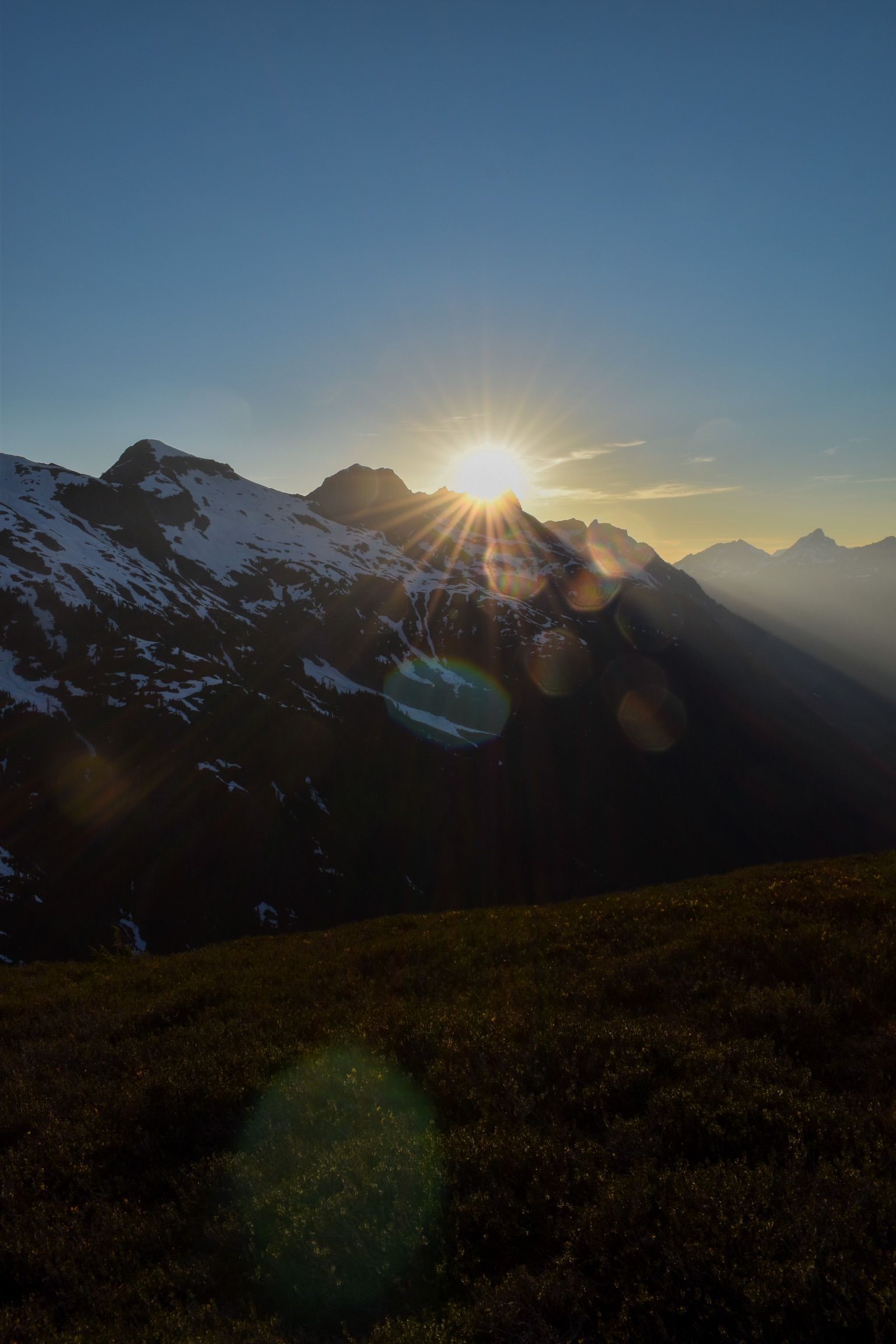
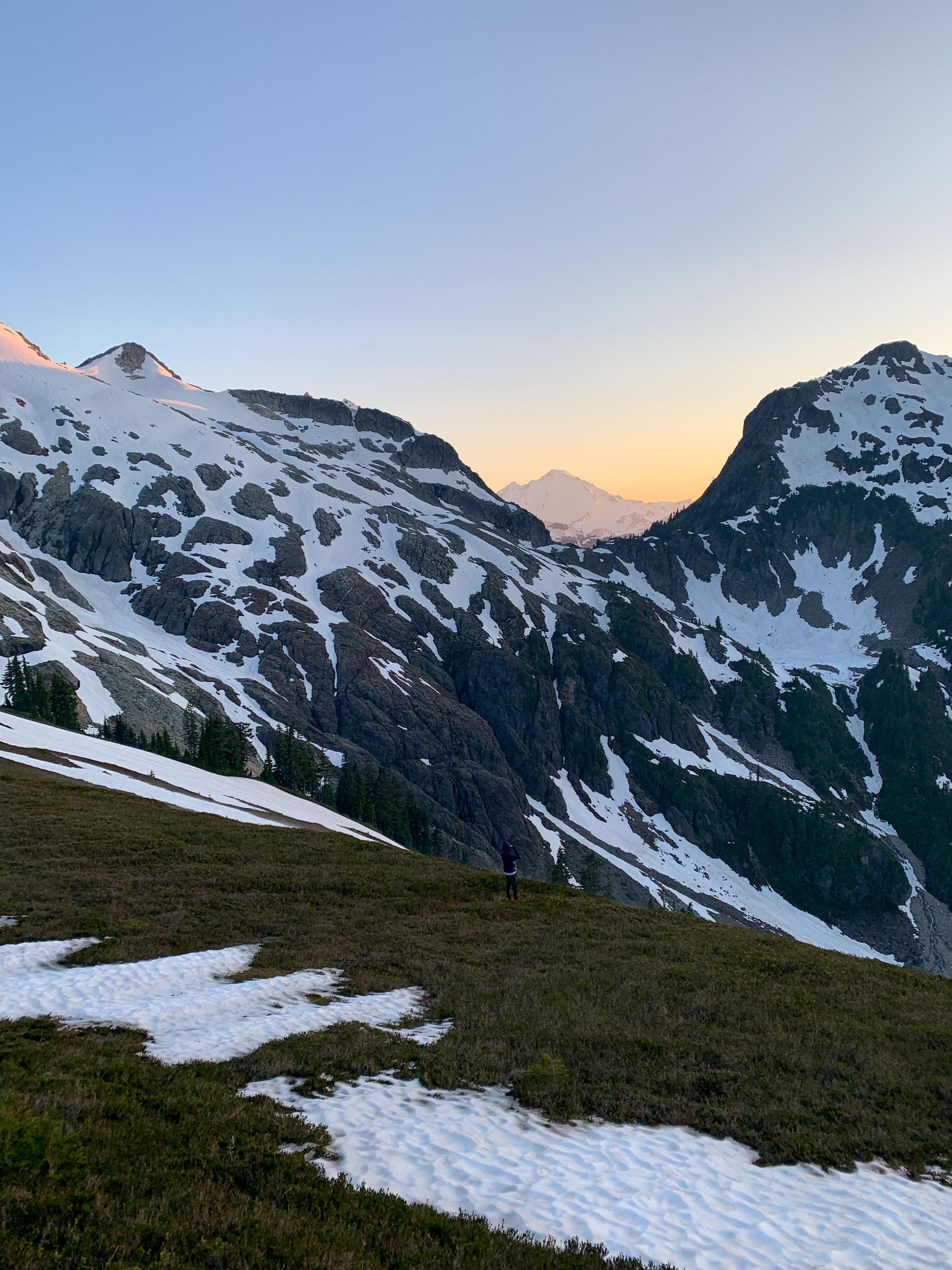

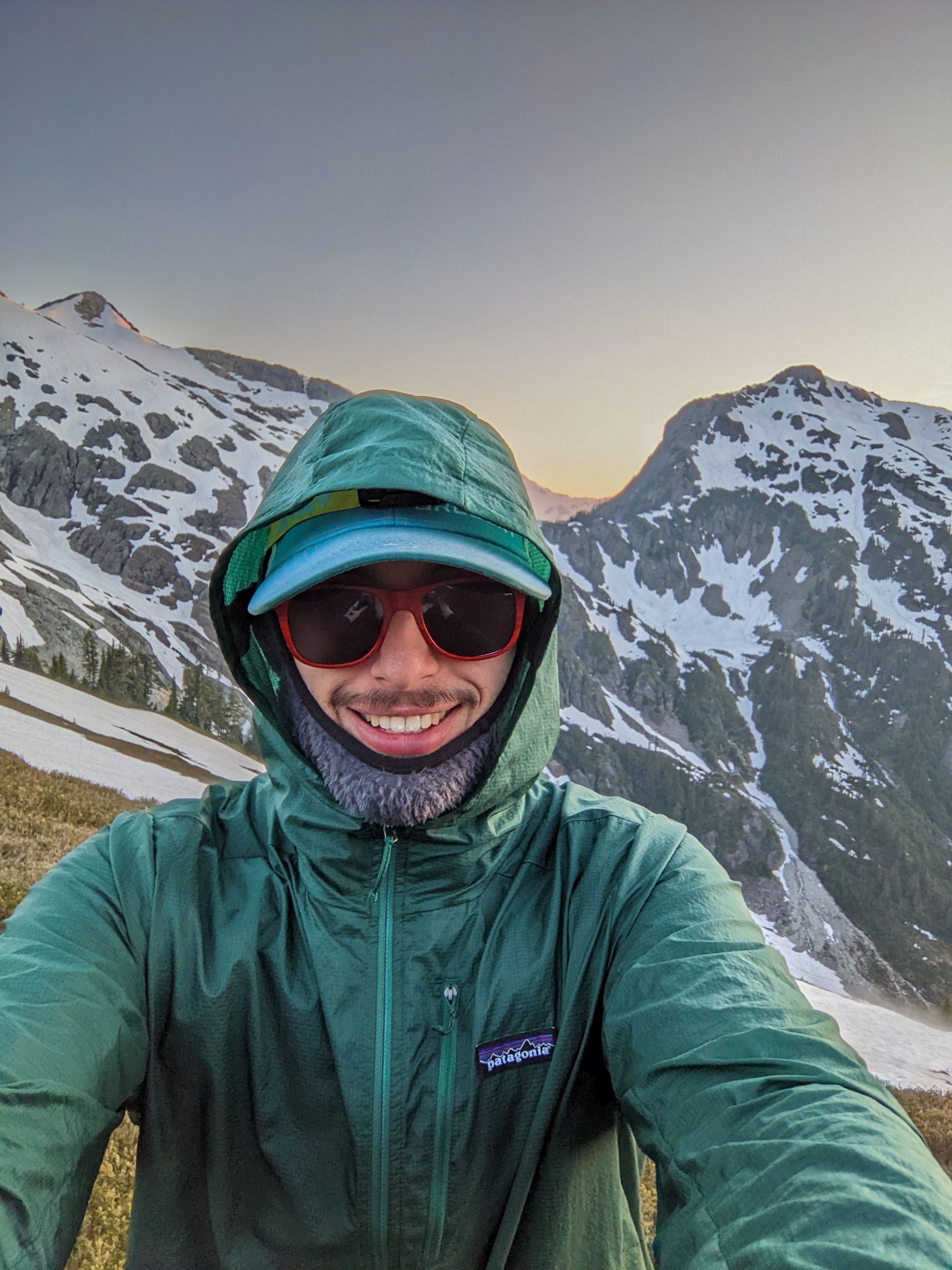

The best practice for camping on Ruth Arm (and in the alpine in general, if it's allowed in that location) is to camp on snow or an established site to protect the fragile vegetation. An overnight permit is not required for this area, since it's located in Mt. Baker Wilderness. However, Ruth's summit is within North Cascades National Park, so a permit is necessary to camp up there. Without a permit, Ruth Arm is the closest logical camp site.
We set up our glacier gear the night before, so we didn't have to do it with our 5AM brains.
The stars were spectacular, but we went to bed early to get an alpine start on summit day. It's often best to climb glaciated peaks early in the morning, when the snow conditions are more stable. After a cool night, the snow is firm for easier climbing; snow bridges over crevasses are stronger; and rockfall, icefall, and wet loose avalanches are less likely.
We began climbing Ruth from the Arm around 5:30AM. We'd have plenty of time to enjoy the views, but it was going to be 80 degrees that day, so we wanted to be off the glacier before it got too warm.
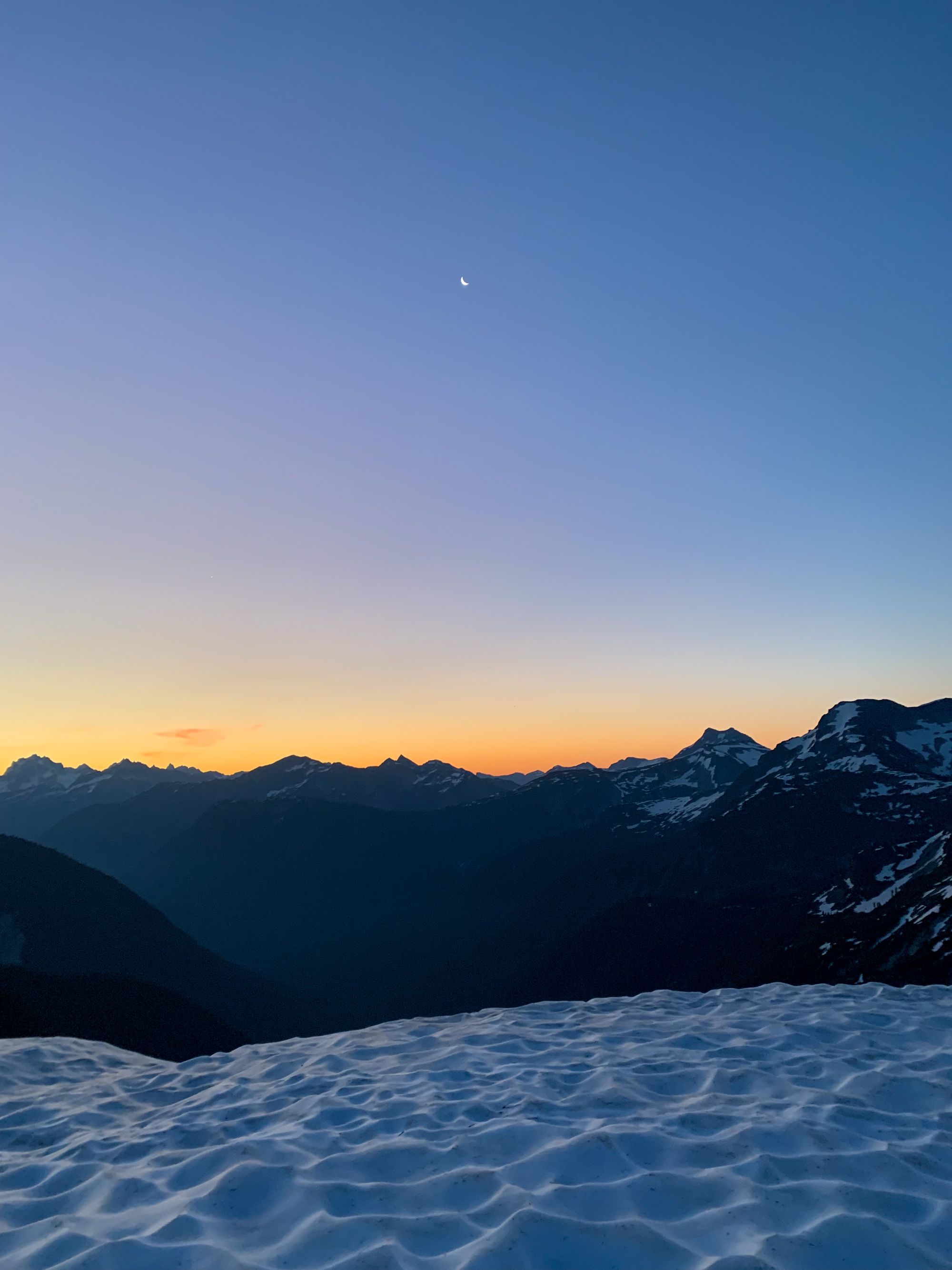
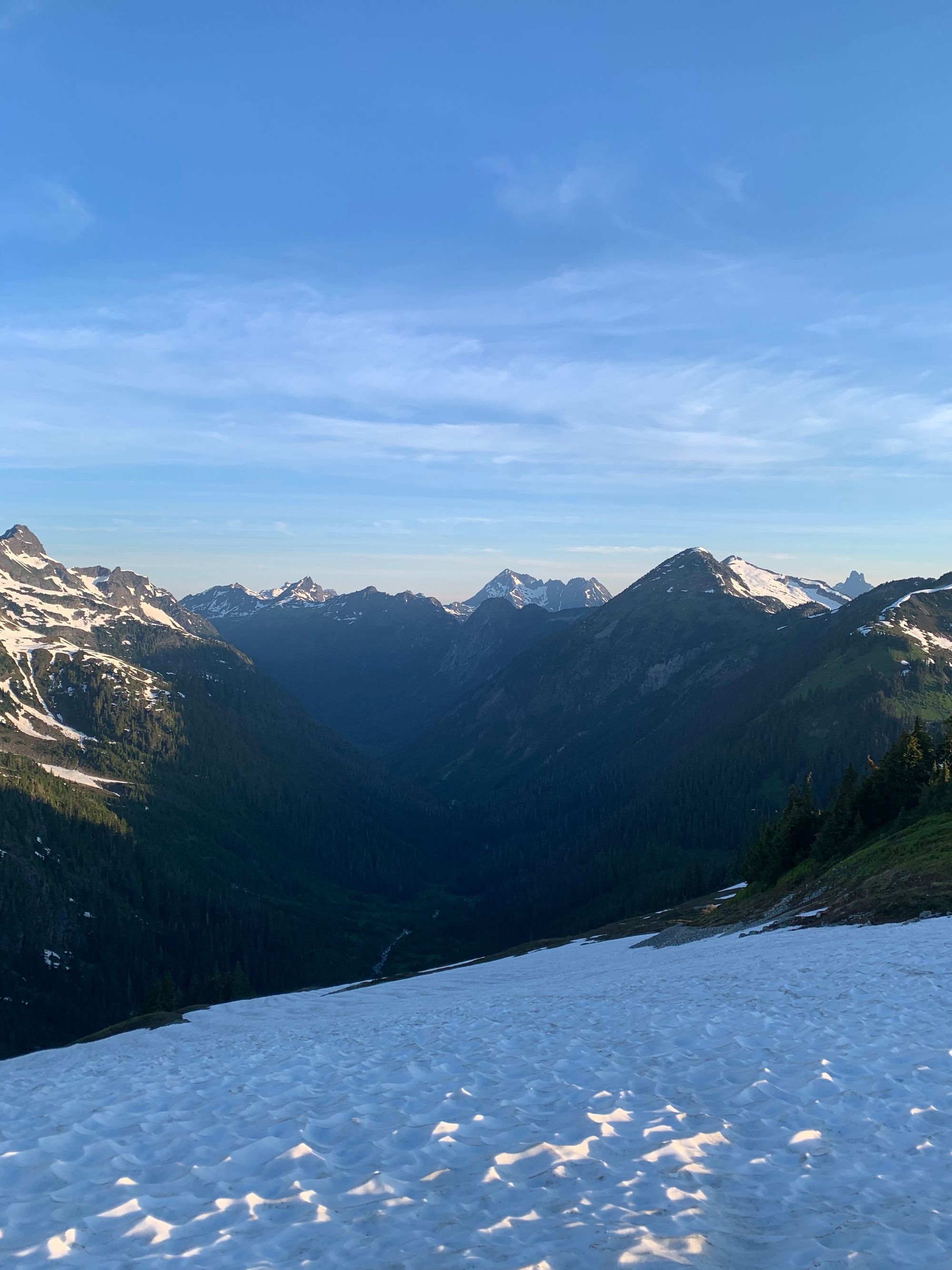
We roped up for the glacier, with me in the lead. I went to work setting the bootpack since the sun and wind had erased the previous day's climbers' efforts. Luckily, snow conditions were firm and great for kicking steps. We carried crampons but never needed to use them.
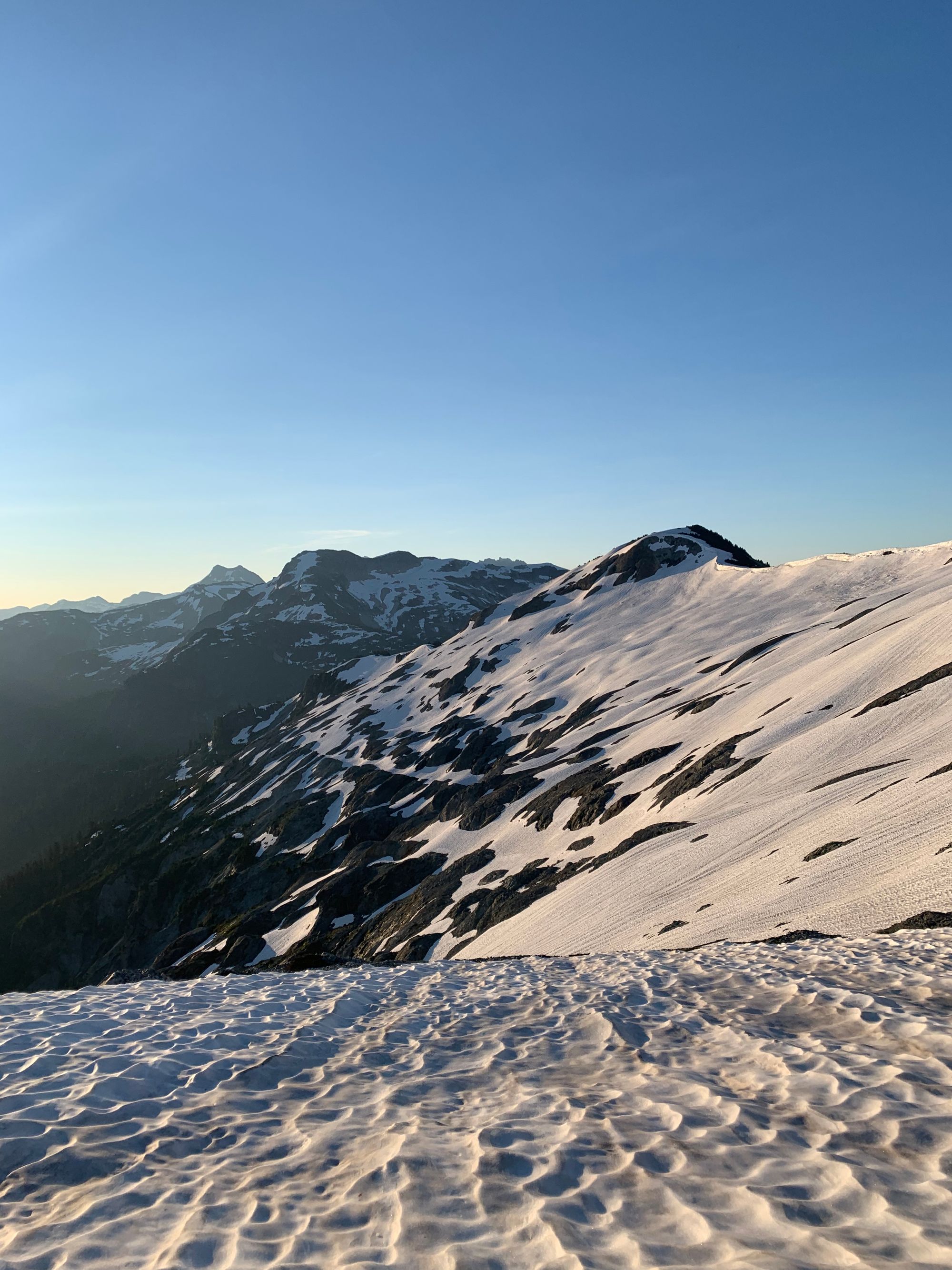
I navigated us around a small open crevasse near the rocks on the ridge. Due to a large late-season snow storm, the glacier was still in early season condition and there wasn't much else opening up yet.
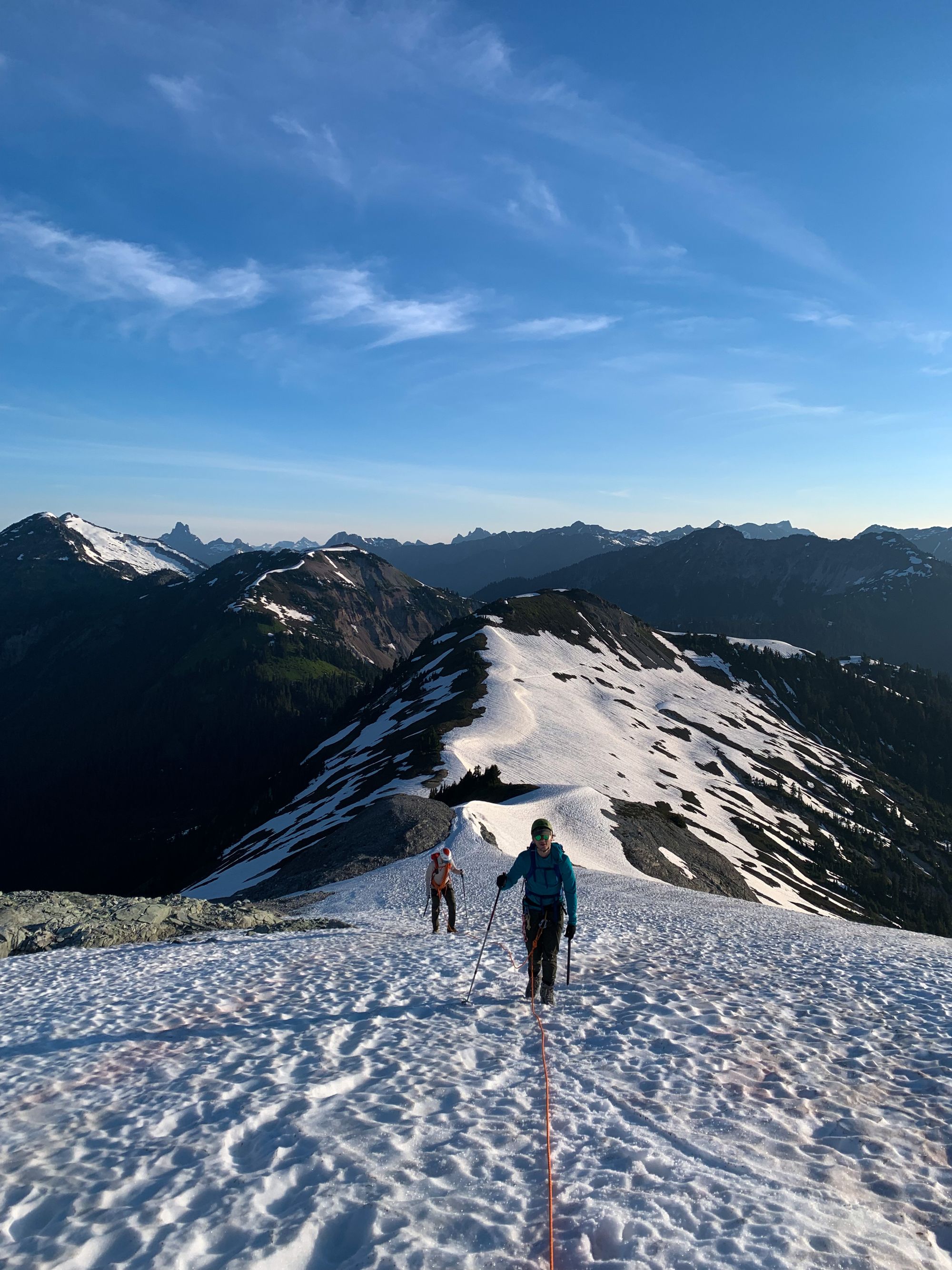
I was new to kicking steps for a prolonged period of time and utilizing efficient steep snow techniques, so my calves were starting to get tight around the steepest pitch of the climb. My pace was slowing so I swung the lead with Greg, who was on the opposite end of the rope team, to maintain our speed. Now at the back, I enjoyed cruising up the bootpack highway that him and Paul set for me.
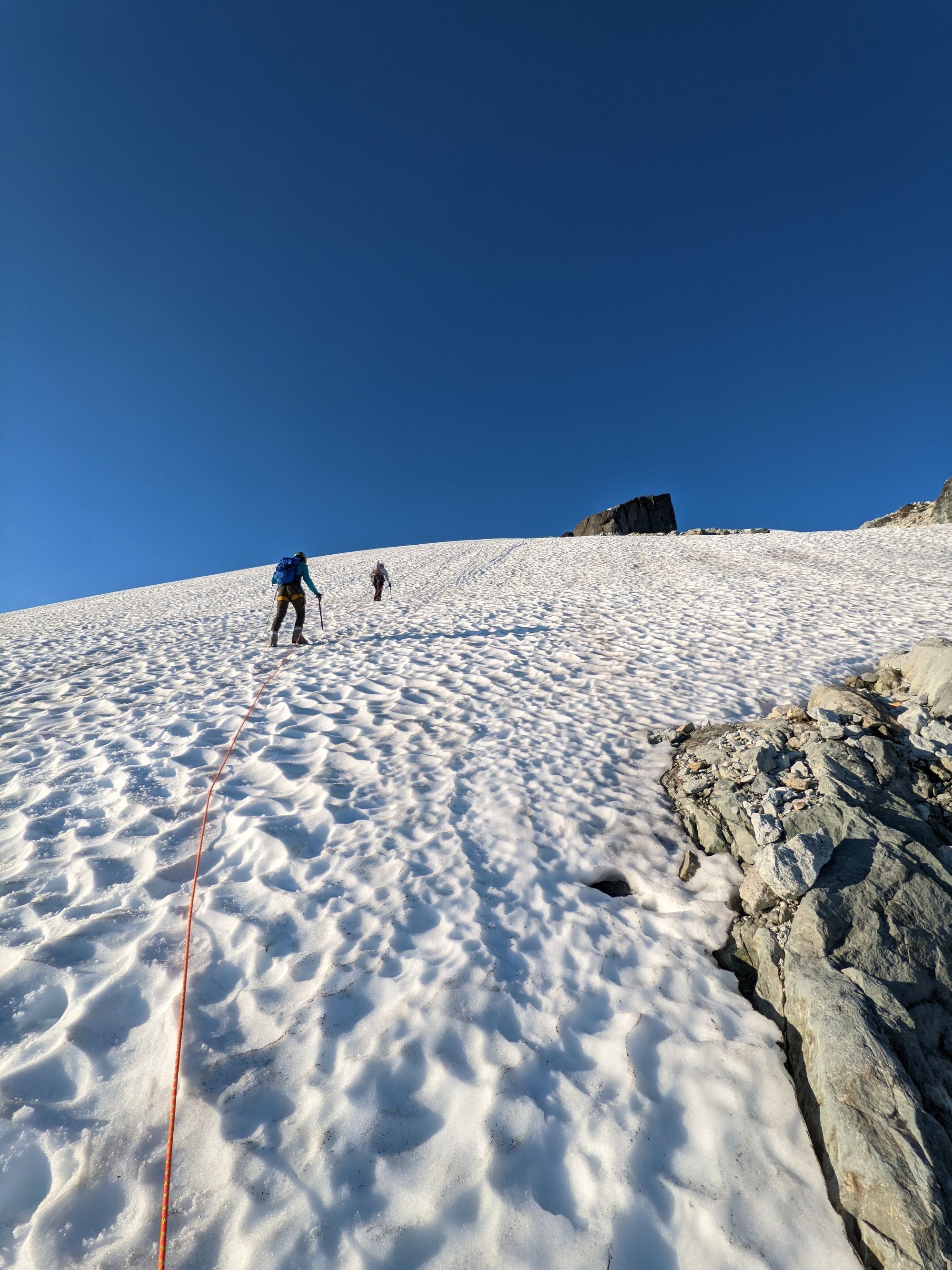
The climb was steep (over 1,000ft), but not more than a mile or so from our campsite. Before long, we were finally on the summit!
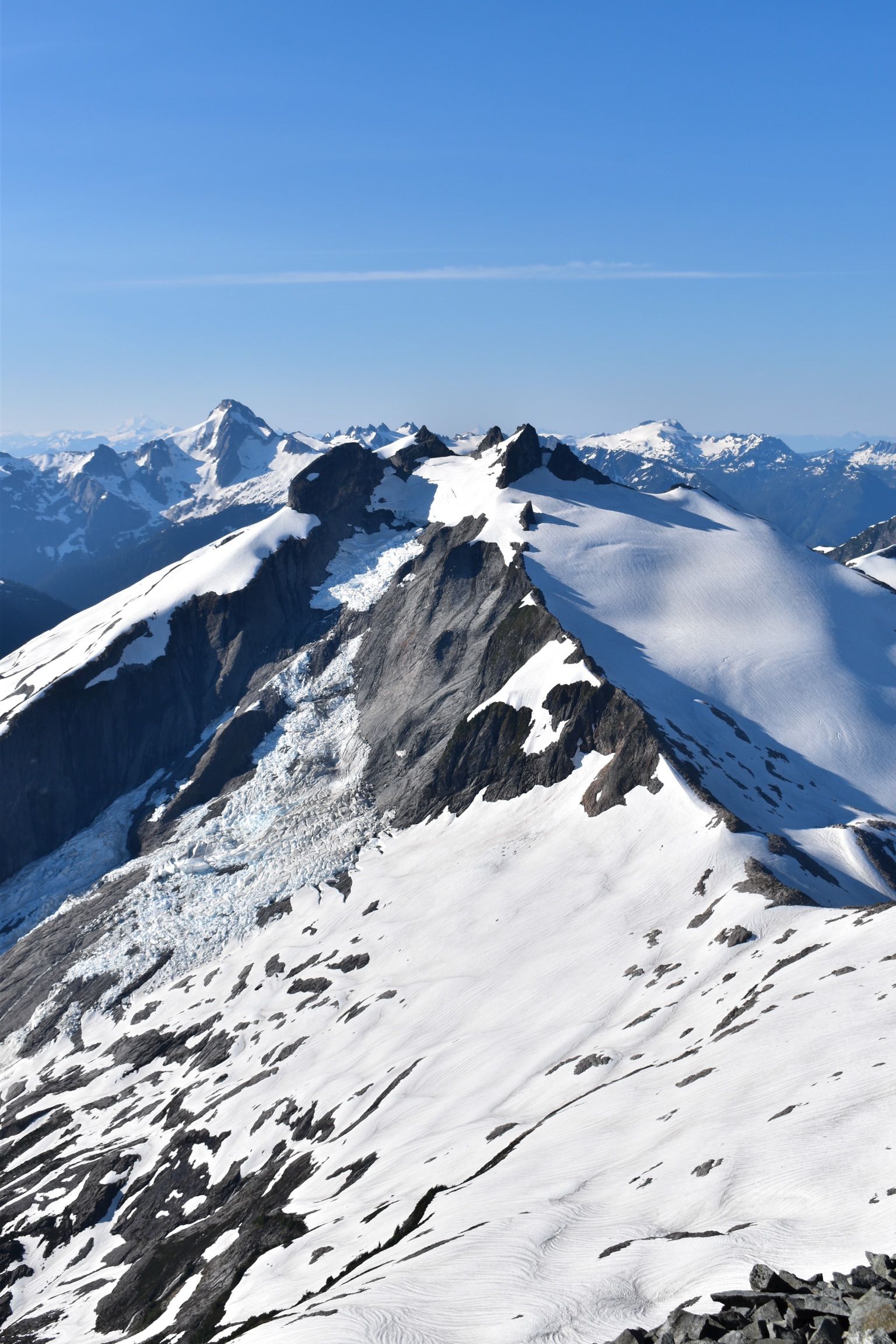
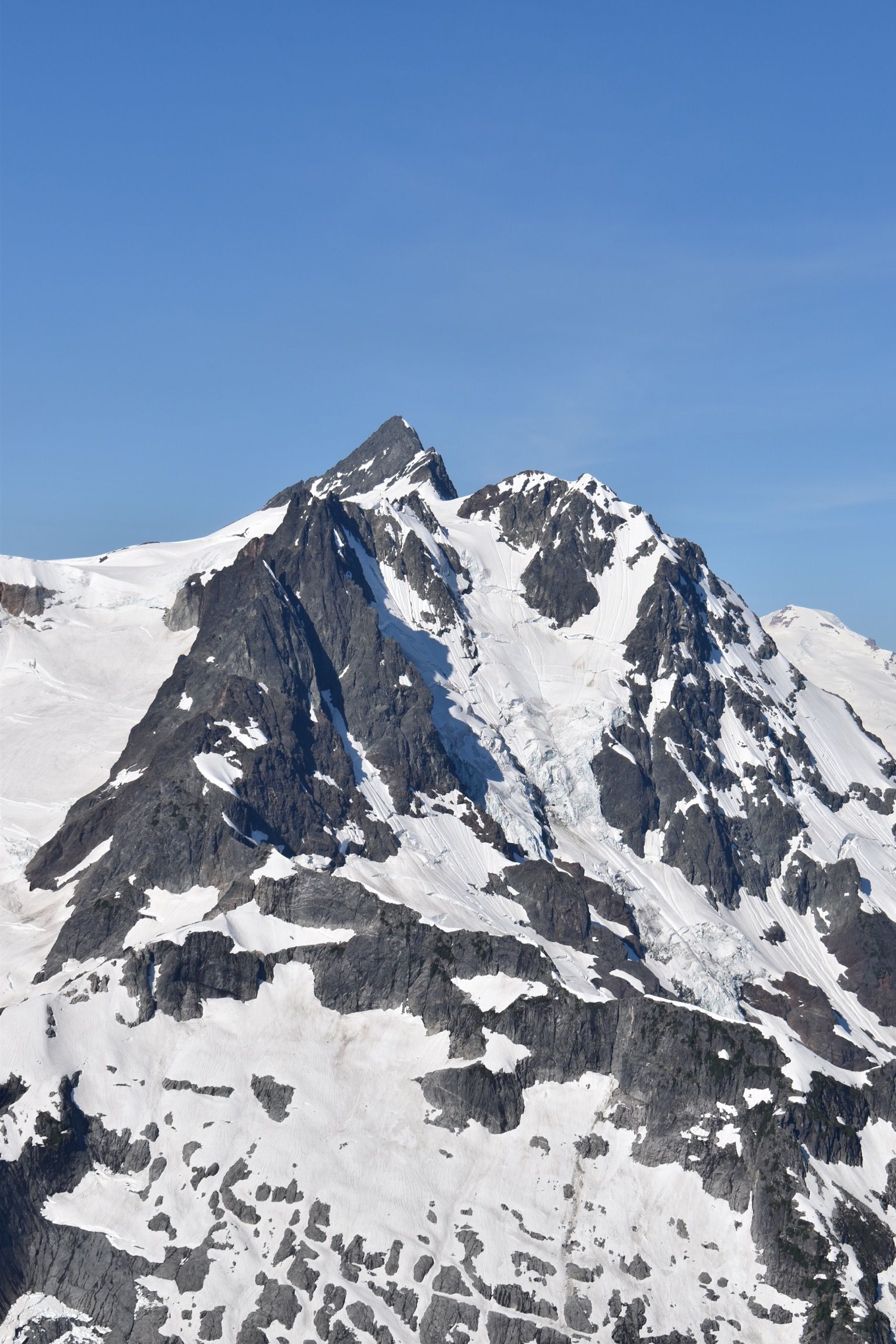
We should have melted snow for more water at our high camp, but we didn't so we ended up running a bit low on summit day. We enjoyed the unobstructed views and alpine vegetation blooms, but then headed down, eager to get back to that sweet Hannegan Pass stream.
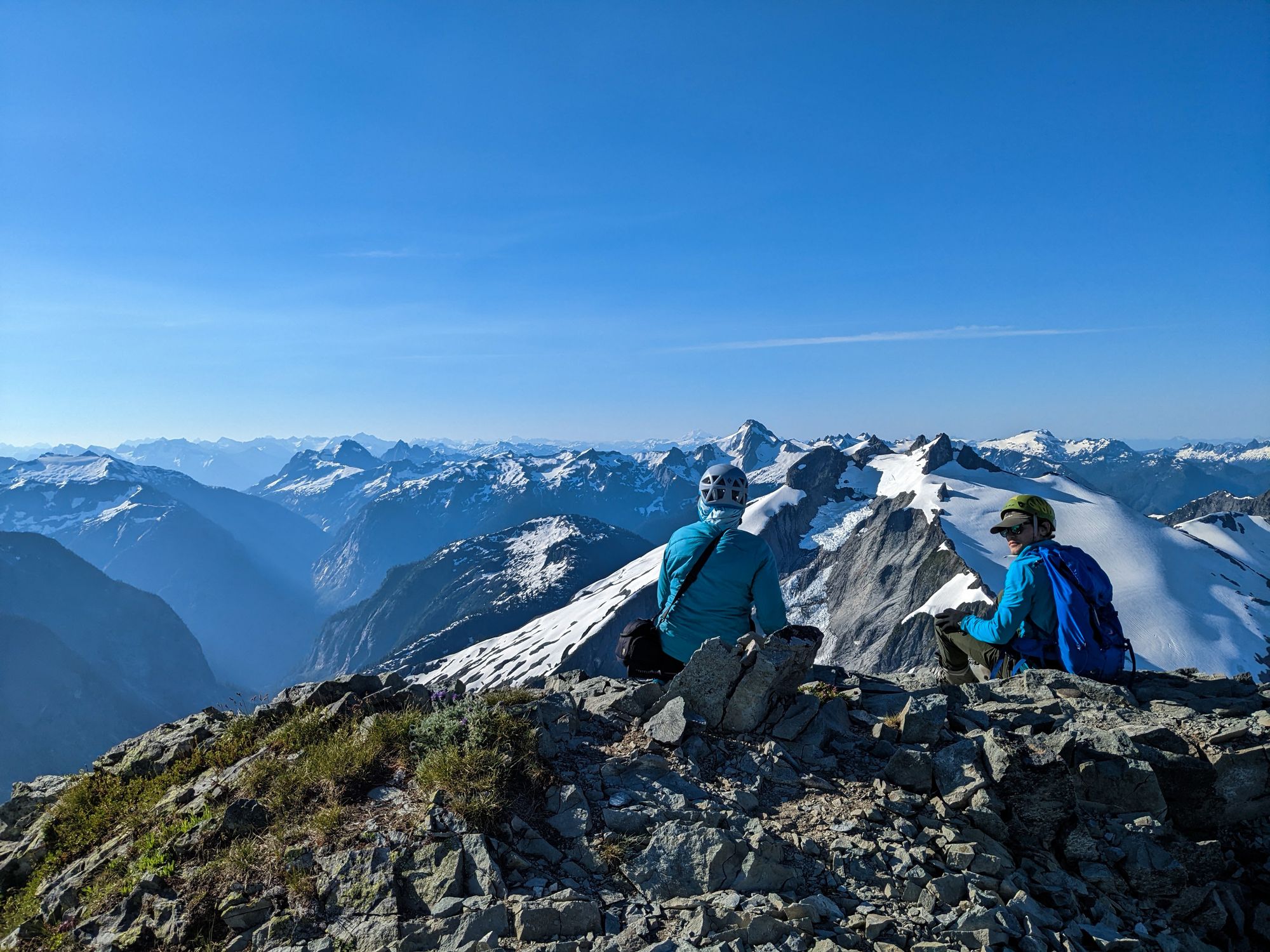
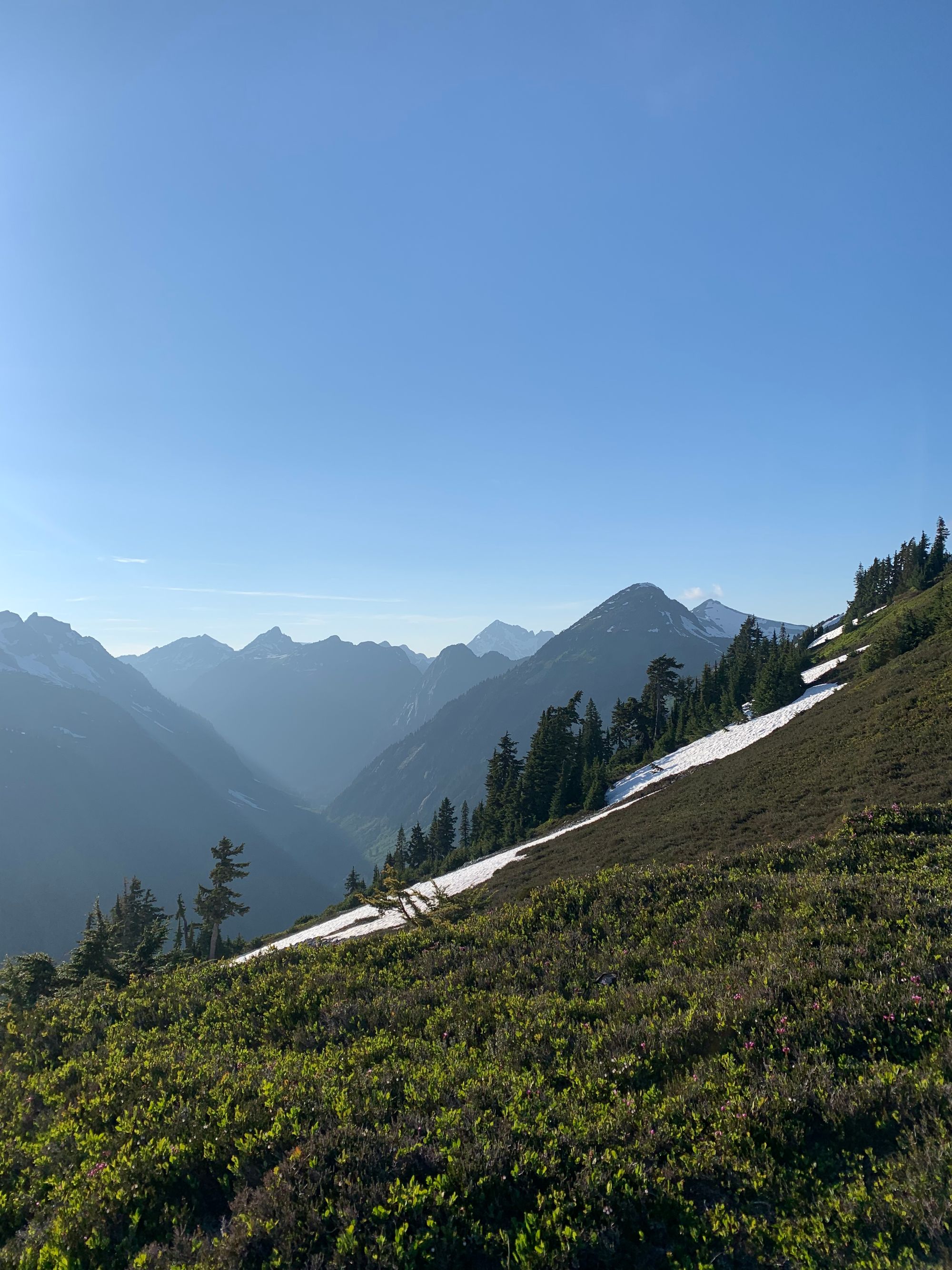
There was a solid bootpack in on the traverse by the time we hiked out on Sunday, making it much easier. The gully, however, was worse the second time around. The heavier water flow made things exciting.
Right above Hannegan Camp, Paul warned us that despite how thirsty we were, we should not chug water or our stomachs would hurt.
"I'm definitely going to chug water." I promised him, knowing my stomach would hurt.
And it did.
The hike out through the valley was beautiful, and before long we were back in the car and on our way to a pull-off alongside the river on the forest service road.
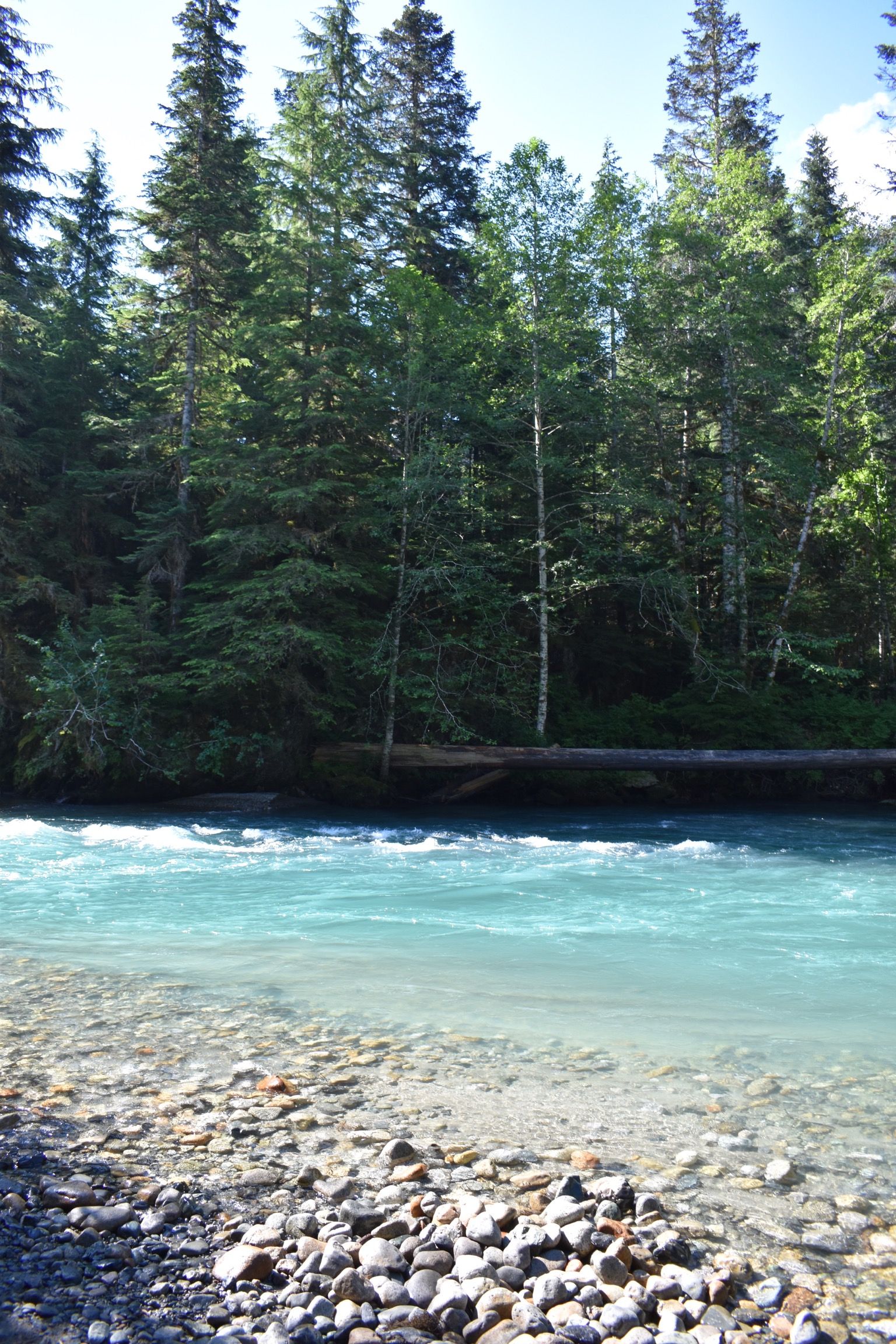
I am so grateful for friends and glaciers and cold streams and blue skies and golden hour in an alpine meadow and everything in between!! We should protect it all.
Round Trip Stats
Mileage: ~12 miles
Elevation Gain: ~4200 ft
Gear List
Hiking Gear
- Cap + Sunglasses / Glacier Glasses
- Wicking Base Layer, upper and lower
- Rain / Wind Layers
- 2x pairs of Socks
- Trail Runners / Approach Shoes
- Medium-size Backpack
- Map + Compass
- Waterproof Bag w/ phone, wallet, keys
- Water Bottles (at least two) + filter or iodine
- Food
- First Aid Kit + Repair Kit
- Headlamp + Spare Batteries
- Trekking Poles
- Sun Screen and Bug Spray
- Spare Water, Shoes, Clothes (to keep in the car for the drive home)
- Phone Charger (for car)
Overnight Gear
- Stove + Fuel + Pot + Bowl + Spork
- Dry Foods for 1 night (repackaged for weight/space)
- Ursack/Food storage system
- Insulating Layers for camp
- A Change of Underwear
- Plastic Bag (for trash)
- Sleeping Bag (appropriate minimum temperature)
- Sleeping Pad (appropriate for minimum temperature)
- Tent/sleeping system
- Toothbrush, Toothpaste, Toilet Paper, Trowel
Glacier Gear
- Mountaineering Boots
- Crampons
- Ice Axe
- Lightweight Gloves
- Harness
- Climbing Helmet
- Crevasse Rescue Kit:
- Picket (Yates V, mid-clip cable is best)
- Pear Locker
- NanoTraxion on Locker
- Tibloc + Pulley on Locker
- Hollowblock / Prussik Cord on Locker
- Double Length Sling on a carabiner
- Single Length Sling on a carabiner
- Extra locker + extra carabiner
- Rope
